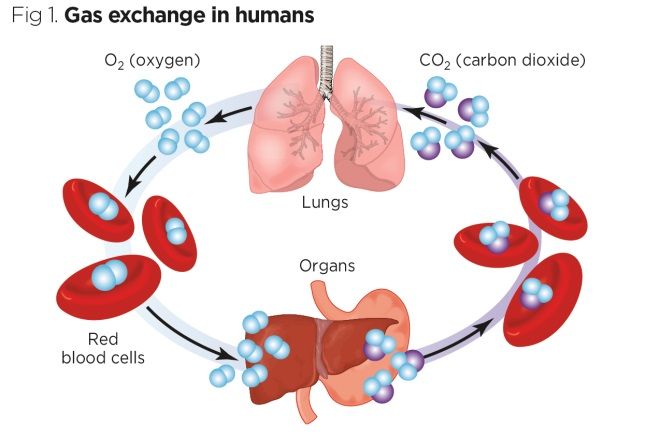The human body performs a vital process known as respiration, where oxygen is taken in from the atmosphere and carbon dioxide, a waste product, is expelled. This process involves several steps to transport these gases through the body.
Transportation of Oxygen
- Inhalation and the Role of Alveoli- When we breathe in, air containing oxygen enters the lungs and reaches tiny air sacs called alveoli. These alveoli are critical for gas exchange.
- Oxygen Transfer to Blood- Surrounding the alveoli are tiny blood vessels called capillaries. Oxygen from the alveoli passes through their thin walls into the blood in these capillaries.
- Haemoglobin’s Role- Inside the red blood cells in our blood, a molecule called haemoglobin binds to the oxygen. About 97% of oxygen is transported this way, with the remaining 3% dissolved in the plasma. Haemoglobin is efficient in carrying oxygen, forming a compound known as oxyhemoglobin.
- Oxygen Delivery to Cells- This oxygen-rich blood is then circulated throughout the body, delivering oxygen to various cells. As the oxygen is released to the cells, the blood picks up carbon dioxide, a waste product of cellular respiration.
Also Check – Respiration in Human Beings

Transportation of Carbon Dioxide
- Production in Cells- Carbon dioxide is produced in the body’s cells as they use oxygen for energy. It needs to be removed from the body as it can be harmful in large amounts.
- Carbon Dioxide in Blood- Most carbon dioxide is carried back to the lungs dissolved in the blood. A significant portion (about 70%) is transported as bicarbonate ions, while around 20-25% binds with haemoglobin to form carbamino-haemoglobin. The rest remains dissolved in the plasma.
- Release into the Lungs- When blood reaches the lungs, carbon dioxide is transferred from the blood to the alveoli.
- Exhalation- Finally, when we exhale, the diaphragm and rib muscles relax, reducing the space in the chest cavity and pushing the carbon dioxide-filled air out of the lungs and into the atmosphere.
Also Check – 9 Important Difference Between Inhalation and Exhalation

